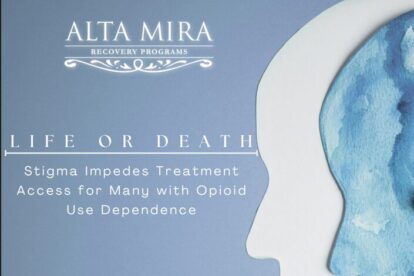
Rehab Center for Sedative Addiction
Sedatives, also known as sedative hypnotics, are a diverse group of medications that get their name because they produce sedation in the form of sleepiness or reduced anxiety levels. Doctors and public health officials also refer to these medications as tranquilizers. Anyone who consumes a sedative for extended periods of time (with or without a prescription) can develop a state of physical dependence. If not monitored and addressed by a physician, this dependent state can lead to sedative addiction.
What Is Sedative Addiction?
For someone with a legitimate sedative prescription, abuse or misuse of a sedative (or any other medication) is defined as taking that medication more often than instructed and/or in larger amounts than instructed. For a person who doesn’t hold a legitimate prescription, abuse occurs when any amount of consumption takes place. In some cases, people in both groups participate in misuse/abuse out of a desire to experience the euphoric effects produced by a barbiturate or benzodiazepine that rapidly dissolves in the bloodstream. However, in other cases, abuse is a result of a sincere (if misguided) desire to feel or increase the therapeutic benefits of sedatives as anti-anxiety medications or sleep aids.
The human brain adjusts relatively quickly to the altered GABA levels triggered by barbiturates and benzodiazepines. Within a matter of weeks or months, it will start to view the presence of these medications as an expected situation. When this brain switch occurs, the affected person may be developing sedative dependence.
Dependence differs from addiction and can appear even in people who closely follow their doctor’s instructions. When doctors recognize this state, they can manage it and prevent it from progressing to addiction. However, in a person who consumes a sedative without the proper medical oversight, addiction is an ever-present possibility.
Two of the symptoms of sedative addiction overlap with the symptoms of sedative dependence are:
- The need to take increasing amounts of a barbiturate or benzodiazepine in order to feel its effects
- The onset of withdrawal symptoms when intake of a barbiturate or benzodiazepine does not meet the brain’s established expectations
Symptoms of Sedative Withdrawal
Specific withdrawal symptoms that may appear in an individual addicted to or dependent on sedatives include:
- Restlessness
- An anxious mental state
- Diarrhea
- Abdominal cramping
- Nausea
- Vomiting
- Convulsions (i.e., seizures)
- Appetite loss
- Disturbed sleep
- Sleeplessness
- Sensory hallucinations
- Muscle tremors or weakness
- Body temperature elevation
- Blood pressure elevation
- Heart rate elevation
Additional problems found in cases where addiction is also present include an inability to set limits on the amount of barbiturate or benzodiazepine consumed on a given day, and an inability to set limits on how often medication consumption occurs on a given day.
Whether related to barbiturate use or benzodiazepine use, sedative addiction forms part of a larger condition known as sedative, hypnotic, or anxiolytic use disorder. This condition, as defined by the Diagnostic and Statistical Manual of Mental Disorders (DSM-5), also includes symptoms of non-addicted sedative abuse that are prominent enough to interfere with the ability to lead a functional life. These symptoms can include such things as:
- Establishment of sedative use as a top priority in daily life
- An unwillingness to stop taking sedatives even when intake leads to obvious problems in close, personal interactions
- Recurring use of a barbiturate or benzodiazepine in situations where this use poses a significant physical risk to self or others
In any given person, sedative, hypnotic, or anxiolytic use disorder may exclusively include symptoms of addiction or exclusively include symptoms of abuse. However, the condition’s inclusive definition was established because many affected individuals experience combined symptoms of abuse and addiction.
Effective World-Class Treatment for Sedative Addiction at Alta Mira
Effective sedative addiction treatment is available for people affected by sedative abuse. The first step in the treatment process is medically supervised detoxification (detox). Anyone who rapidly halts the use of a barbiturate or benzodiazepine can develop serious or severe seizures. For this reason, sedative detox takes a gradual approach and centers on the use of controlled, diminishing doses of appropriate detox medications.
The time needed to complete detox is determined largely by the type of sedative responsible for producing abuse/addiction. Some barbiturates and benzodiazepines are eliminated from the bloodstream relatively quickly. On the other hand, the body takes longer to eliminate certain medications in both families of substances.
For someone in the depths of sedative addiction, recovery can feel like an unattainable goal. But it’s important to know that a clean and sober life can be achieved. No matter how many times an addict has tried and failed, or how long they’ve been struggling with the disease, recovery is possible. It’s never too late to get treatment.
When clients first walk through our doors at Alta Mira, many are unaware they may have an untreated mental health issue that is contributing to their struggle with sedatives. Treating the symptoms of the addiction alone may not lead to lasting recovery if the co-occurring disorder remains unrecognized and untreated. Our approach provides for the most accurate diagnosis possible, enabling our team to customize an effective treatment plan to fit your unique needs and goals, providing a pathway to a more authentic, productive, and healthy life.
Evidence-Based Treatment Modalities
We use evidence-based modalities in our residential sedative addiction treatment programs, including dialectical behavior therapy (DBT) skills, cognitive behavioral therapy (CBT), Somatic Experiencing (SE), and Eye Movement Desensitization and Reprocessing (EMDR), where appropriate.
Accurate Diagnosis
From your initial psychiatric evaluation to your individualized neuropsychological testing, we work to develop the most accurate diagnostic profile possible. Depending on each individual client’s detox, identifying underlying co-occurring issues can take several weeks.
Appropriate Medications
Following the initial psychiatric evaluation, clients meet with our psychiatrist weekly while they are in residential treatment with us. When prescribed, the use of genetic testing can help clients get on medications that work better for them with fewer side effects.
Get Help for Drug Addiction
Alta Mira is a Safe Place to Get Your Life on Track
How Our Luxury Sedative Addiction Treatment Center Transforms Lives
During your stay at Alta Mira, you’ll have an individualized treatment plan tailored to your specific needs. This will include comprehensive services for any co-occurring conditions that might be complicating or supporting your sedative addiction.
Our Transformational Sedative Addiction Treatment Program
Your first 30 days of treatment at Alta Mira is referred to as your Detox, Stabilization, Assessment period, which begins with private, medically supervised detox. During this time, our detox specialists will keep you safe and secure, monitored 24/7, as you rest in the privacy of your own room.
You can also expect:
- Weekly meetings with a psychiatrist
- Weekly meetings with a medical doctor
- Neuropsychological testing and advanced psychological testing
- Orientation to our recovery fundamentals and self-regulation skills development
- In-depth family engagement and the option for loved ones to attend multiple 4-day family programs
- Introduction to therapy groups
Following 30 days of stabilization, clients move on to the next phase of their recovery process at Alta Mira, which we call our Transformational Program. Key elements of our complete 90-day transformational sedative rehab program include:
- Three individual intensive psychotherapy sessions per week
- Weekly meetings with a medical doctor
- Participation in advanced workshops to support introspection, foundational change toward recovery, and relapse prevention
- Expanded neuropsychological assessment and continued weekly psychiatrist meetings inform tailored treatment adjustments and a refined individualized clinical approach
- Practice and integration of recovery principles and self-regulation skills and continued family work to support improved individual outcomes
- Intensive Workshops
The Courage to Change
Lasting change takes time. It can take six weeks to change a simple habit. Changing behavior following sedative addiction can be very challenging. Learning how to develop clean and sober behaviors, effectively deal with triggers and stressors, take medication as prescribed, and make healthy lifestyle changes to support long-term recovery can take time.
Better Sedative Addiction Treatment Outcomes
Our 90-day program provides the structure, support, and time to learn a new way of living to give clients the best possible outcome. Studies show that individuals should participate in drug treatment for at least 90 days to see the best results. However, the best indicator of success is not the duration of the program, but the mutual cooperation between the recovering addict and the treatment center, as they plan for continuing care after finishing the program.
Working Together
We understand that in order for treatment to be successful, we must listen closely and truly understand your needs, aspirations, personal history, and treatment goals. All members of our care team align closely with you so that you feel safe, respected, and ready to do your work. With this approach, Alta Mira co-creates a profound healing experience with you so you can achieve your recovery goals and reclaim your life.
Reclaim Your Life at Our Private Rehab for Sedative Addiction Today
We believe individuals are best able to focus on their recovery when immersed in a secure, serene, healing setting. That’s why we provide comfortable surroundings while maintaining the most advanced and sophisticated sedatives rehab program in Northern California. Clients can expect compassionate care from our best-in-class sedative addiction specialists.
Seeking a helping hand to guide you through these difficult times is not an easy decision. Our caring and experienced team at Alta Mira can help guide you through the next steps toward achieving lasting recovery.
Don’t let sedative addiction destroy your life. To begin your life-changing transformation, contact us today.
Sedative Addiction FAQs
Sedative overdoses occur when there is enough barbiturate or benzodiazepine in the bloodstream to depress central nervous system activity below its minimum sustainable threshold. Overdose indicators include:
- Excessive sleepiness
- Lightheadedness
- An inability to think clearly
- Inadequate lung function (excessively slow, irregular, or shallow breathing)
- An inability to speak clearly
- Sensory hallucinations
- An involuntary eye movement called nystagmus
- Uncoordinated or non-responsive muscles
- Unsustainably low blood pressure
- Hypovolemic shock
- Kidney failure
Potential severe consequences of a sedative overdose can include coma and death.






